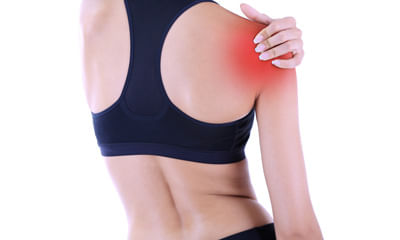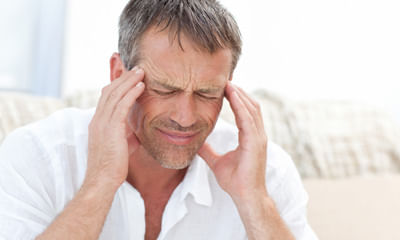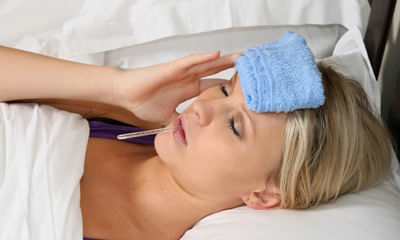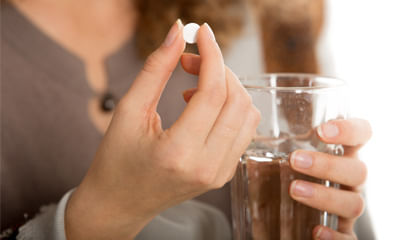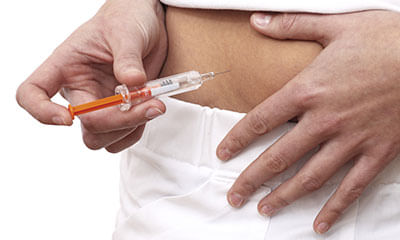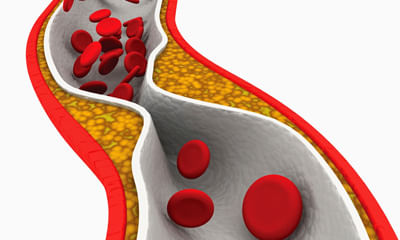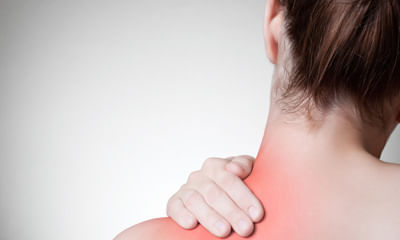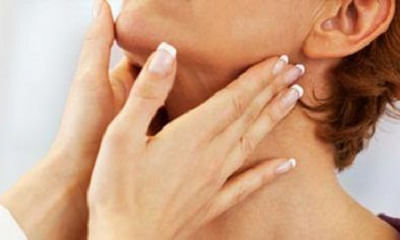Esr Blood Test Normal Values
My mother (49) is suffering from joint pain since dec 2022 occurring randomly, sometimes at feet, fingers, or shoulders. ...
Ask Free Question
Rheumatoid arthritis the "normal" range (or negative test result) for rheumatoid factor is less than 14 iu/ml. Any result with values 14 iu/ml or above is considered abnormally high, elevated, or positive. Treatmentthere is no cure for rheumatoid arthritis. But clinical studies indicate that remission of symptoms is more likely when treatment begins early with medications known as disease-modifying antirheumatic drugs (dmards). Medicationsthe types of medications recommended by your doctor will depend on the severity of your symptoms and how long you've had rheumatoid arthritis. •nsaids. Nonsteroidal anti-inflammatory drugs (nsaids) can relieve pain and reduce inflammation. Over-the-counter nsaids include ibuprofen (advil, motrin ib) and naproxen sodium (aleve). Stronger nsaids are available by prescription. Side effects may include stomach irritation, heart problems and kidney damage. •steroids. Corticosteroid medications, such as prednisone, reduce inflammation and pain and slow joint damage. Side effects may include thinning of bones, weight gain and diabetes. Doctors often prescribe a corticosteroid to relieve acute symptoms, with the goal of gradually tapering off the medication. •disease-modifying antirheumatic drugs (dmards). These drugs can slow the progression of rheumatoid arthritis and save the joints and other tissues from permanent damage. Common dmards include methotrexate (trexall, otrexup, others), leflunomide (arava), hydroxychloroquine (plaquenil) and sulfasalazine (azulfidine). Side effects vary but may include liver damage, bone marrow suppression and severe lung infections. •biologic agents. Also known as biologic response modifiers, this newer class of dmards includes abatacept (orencia), adalimumab (humira), anakinra (kineret), baricitinib (olumiant), certolizumab (cimzia), etanercept (enbrel), golimumab (simponi), infliximab (remicade), rituximab (rituxan), sarilumab (kevzara), tocilizumab (actemra) and tofacitinib (xeljanz). These drugs can target parts of the immune system that trigger inflammation that causes joint and tissue damage. These types of drugs also increase the risk of infections. In people with rheumatoid arthritis, higher doses of tofacitinib can increase the risk of blood clots in the lungs. Biologic dmards are usually most effective when paired with a nonbiologic dmard, such as methotrexate. Therapy your doctor may send you to a physical or occupational therapist who can teach you exercises to help keep your joints flexible. The therapist may also suggest new ways to do daily tasks, which will be easier on your joints. For example, you may want to pick up an object using your forearms. Assistive devices can make it easier to avoid stressing your painful joints. For instance, a kitchen knife equipped with a hand grip helps protect your finger and wrist joints. Certain tools, such as buttonhooks, can make it easier to get dressed. Catalogs and medical supply stores are good places to look for ideas. Surgeryif medications fail to prevent or slow joint damage, you and your doctor may consider surgery to repair damaged joints. Surgery may help restore your ability to use your joint. It can also reduce pain and improve function. Rheumatoid arthritis surgery may involve one or more of the following procedures: •synovectomy. Surgery to remove the inflamed lining of the joint (synovium) can be performed on knees, elbows, wrists, fingers and hips. •tendon repair. Inflammation and joint damage may cause tendons around your joint to loosen or rupture. Your surgeon may be able to repair the tendons around your joint. •joint fusion. Surgically fusing a joint may be recommended to stabilize or realign a joint and for pain relief when a joint replacement isn't an option. •total joint replacement. During joint replacement surgery, your surgeon removes the damaged parts of your joint and inserts a prosthesis made of metal and plastic. Surgery carries a risk of bleeding, infection and pain. Discuss the benefits and risks with your doctor.
Hello Dr. Sahib ji. Why body gets tired and sleepy after two hours normal work. If not rest after two hours headache sta ...
Ask Free Question
Hello lybrate-user. You should get some blood test done- cbc with esr, iron profile, thyroid profile. Many women have low iron and that causes tiredness. Increase spinach, pista, apple, dates in your diet. Exercise and drink plenty of water daily. Consult me if you have any further inquiry.
I have pain in the lower neck right side for the past 2 and half months, also pain while swallowing, raised esr and crp, ...
Ask Free Question
What was the diagnosis made, for which prednisone was started. Was there an mri or xray done, if yes what the report. If you have cervical disc disease then physiotherapy should help along with supplememts. Need to establish the diagnosis. If its rheumatoid, then continuous medications are needed to control the disease.
I am experiencing mild fever after 5 pm everyday, headache, nausea and bloating kind in my stomach. Had cefixime for 3 d ...
Ask Free Question
With fever for more than 5 days which has not come to normal even after cefixime for 5 days. This may be resistant uti for cefixime or fever with some other cause. Your doctor may ask for other tests like cbc, malaria rapid test, dengue fever and urine culture etc. Keep record of temp by noting date and temp record 3 times in a day. Ie am, 1 noon and 9 pm take plenty of liquid by mouth.
I recently had high fever dehydration and vomiting so doctor had asked me to do blood test. Rest all is normal expect es ...
Ask Free Question
The causes for high esr are ----infection s/inflamations in heart; kidney ; git; bones ; blood vessels etc; autoimmune disorders like --irritable bowel syndrome; rhematoid arthritis etc --kindly get check-up with investigations under a medical consultant doctor and treat the identified health problem ,so that your esr will come down.
I am 24 years old female. Recently I have tested my blood. Wbc count is 13700 and esr 39 mm. Others else are normal what ...
Ask Free Question
Hello lybrate-user, above test result shows a viral infection. Nothing to worry I want to know your full history and other test result. Feel free to consult with me on Lybrate. For now take tab cefolac-o bd cap panta dsr od.
My mother was taking tonact 10 medicine. She has diabetes, cholesterol and her blood pressure is also high. She takes me ...
Ask Free Question
Hello lybrate-user common adverse effects of anti cholesterol drugs can vary from muscle pains, increase in liver enzyme, dyspepsia etc. But the symptoms mentioned above indicates that she is suffering with acute febrile illness, which may not be because of the above drugs, she needs to be evaluated further to identify the causes of fever. Pls consult a physician and take appropriate treatment. Thank you.
Sir I am 70 years old I have swelling and pain in my wrist and fingers, my ra test is 14.4 negative, blood urea 28, seru ...
Ask Free Question
Treatment goals •to protect the joint from further damages. •provide pin relief. •prevent deformity and disabilities. •increase functional capacity. •improve flexibility and strength. •encourage regular exercise. •improve general fitness. Physiotherapy modalities - hot/cold applications- electrical stimulation- hydrotherapy and spa therapy rehabilitation treatment technique - rest and splinting - compression gloves - assistive devices and adaptive equipment - massage therapy - therapeutic exercise - patient education assistive devices and adaptive equipment occupational therapy improves functional ability in patients with ra. Occupational therapy interventions such as assistive devices and adaptive equipments have beneficial effects on joint protection and energy conservation in arthritic patients.Assistive devices are used in order to reduce functional deficits, to diminish pain, and to keep patients' independence and self-efficiency. Loading over the hip joint may be reduced by 50% by holding a cane. In fact, most of these instruments are originally designed for patients with neurologic deficits; therefore, certain adaptations may be needed for them to be used in patients with arthritis. Elevated toilet seats, widened gripping handles, arrangements related with bathrooms, etc. Might all facilitate the daily life. The procedures needed to increase compliance of the patient with the environment and to increase functional independence are mainly determined by the occupational therapist. Massage therapy that improves flexibility, enhances a feeling of connection with other treatment modalities, improves general well being, and can help to diminish swelling of inflamed joints. Massage is found to be effective on depression, anxiety, mood, and pain. Therapeutic exercise every joint should be moved in the rom at least once per day in order to prevent contracture. In the case of acutely inflamed joints, isometric exercises provide adequate muscle tone without exacerbation of clinical disease activity. Moderate contractures should be held for 6 seconds and repeated 5–10 times each day. Dynamic exercise therapy in improving joint mobility, muscle strength, aerobic capacity and daily functioning in patients with rheumatoid arthritis (ra). Finally, in chronic stage with inactive arthritis, conditioning exercises such as swimming, walking, and cycling with adequate resting periods are recommended. They increase muscle endurance and aerobic capacity and improve functions of the patient in general, and they also make the patient feel better. Patient education in patients with ra, sociopsychological factors affecting the disease process such as poor social relations, disturbance of communication with the environment, and unhappiness and depression at work are commonly encountered. The treatment of rheumatic diseases should provide education and information to their patients about their condition and the various physical therapy and rehabilitative options that are available to improve their quality of life. Passive treatments for rheumatoid arthritis •cold therapy reduces circulation, which ultimately decreases swelling. For example, a cold compress may be placed on the painful area. •cold therapy in acute phase •dosage 10-20mints/1-2 times a day. •heat therapy eases muscle tension and gets blood to flow more quickly to the painful area. For example, a moist, warm cloth may be used to promote circulation. •heat therapy in chronic phase •dosage 20-30mints/1-2 times a day. •hydrotherapy involves reducing your ra-related pain and other symptoms with water. With hydrotherapy, you will be submerged in warm water to relieve your symptoms. •massage can help reduce muscle tension and promote good circulation. It's also a fantastic way to help you manage stress (especially important for people with rheumatoid arthritis). •transcutaneous electrical nerve stimulation (tens) works by blocking pain signals from getting to your spinal cord. It also helps decrease muscle spasms. •tens short term pain relief (6 to 18 hrs) •ultrasound creates warmth using sound waves, whichenchanes circulation and decreases joint pain, inflammation, and stiffness. Exercise for acute phase: •preformed exercise at least once a day. •general assisted movement through normal range (joint mobilisation). •isometric-“static movements” helps to maintain muscle tone without increasing inflammation. Exercise for the chronic phase: •can progress the above exercise to include use of light resistance. •postural/core stability exercises. •swimming/walking/cycling to maintain cardiovascular fitness. •gentle stretch for areas that become tight, such as knees &calves. Regular exercises: •maintaing muscle strength is important for joint stability & preventing injury. •muscles can become weak following reduced activity. •pain signals from yours nerves and swelling can both inhibits muscles. •muscle length can be affected by prolonged positions immobilization and tightness can limit daily activities. Alternative therapies: •thi chi. •musical therapy. •yoga therapy. •relaxation techniques. •pilates. Active treatments for rheumatoid arthritis •flexibility and strengthening exercises improve your range of motion and help you build muscle strength. Yoga and pilates are flexibility and strengthening exercises. •low-impact aerobic exercise is gentle but effective at helping you manage rheumatoid arthritis symptoms. Light walking is an example of this type of exercise. Your physical therapist will let you know how often to do these exercises. For example, you may need to do a few specific exercises 3 times a day, or your physical therapist may recommend a routine that incorporates 30 minutes of low-impact aerobic exercise a day and 30 minutes of strengthening exercises every other day. If your pain is more in the proximal joints, ie. In the upper limbs if the pain is present in the fingers/wrist and in the lower limbs it the pain is present in the toes/ ankle, then we shall definitely say it is rheumatic arthritis. Wear elbow brace and wrist brace which will make her to feel warm and that will make the joints become firm. Hot water fermentation will helpknee cap will also help to prevent the damaged cartilagesif your pain is more in the distal joints, ie. In the upper limbs if the pain is present in the fingers/wrist and in the lower limbs it the pain is present in the toes/ ankle, then we shall definitely say it is rheumatic arthritis. If your proximal joints (ie. Shoulder, hip & knee has pain) then you can pour hot (warm) water in that area to reduce the inflammation. If you have pain in the distal joints ie. Wrist, fingers, ankle, toes then you can wear either elbow brace or wrist brace which will help you to feel warm and very protective. And also immerse the distal joints in the hot water tub which will help you to reduce the pain.
I am 41 years old female who is under hypothyroid treatment for the past 11 years with 100 mcg eltroxin. 6 months before ...
Ask Free Question
See first of all ra factor is not a specific test for rheumatoid arthritis. It is just like doing an antigen test for covid. More specific one to rule out ra is anti ccp. Thyroid disorders/diabetes or other hormonal issues can worsen your joint symptoms. Even there are many other types of arthritis in which ra and anti ccp can be negative. Check your blood routine with esr ,rbs, uric acid, crp, anti ccp and periodically check for your thyroid status. Any other problems like breathing difficulty, tightness in chest, urinary infections, redness in eye, skin changes to be looked into for further evaluation.
I am 49 years old female. My latest blood test shows high esr - 44 .hba1c is 8.7.fasting sugar is 144. My crp is at 10.7 ...
Ask Free Question
Are you taking some medicine for sugar or is it diagnosed for the first time. U have not mentioned your symptoms. U need to start medicine. Also follow diabetes diet which simply means eating the healthiest foods in moderate amounts and sticking to regular mealtimes. A diabetes diet is a healthy-eating plan that's naturally rich in nutrients and low in fat and calories. Key elements are fruits, vegetables and whole grains. U can take (moderate amount) grapes. Apples. Berries. Citrus fruits. Papaya. U should avoid sugar-sweetened beverages. Sugary beverages are the worst drink choice for someone with diabetes. Trans fats sugar, cake, pastries mithai/sweets chocolate fruits like mango, litchi etc. White bread, pasta fruit-flavored yogurt. Sweetened breakfast cereals. Flavored coffee drinks. Honey 1. Don't take tea empty stomach. Eat something like a banana (if you are not diabetic) or soaked almonds or any seasonal fruit. No only biscuits or rusk will not do. 2. Take your breakfast every day. Don't skip it. 3. Have light meals every 2 hours (in addition to your breakfast, lunch n dinner) e.g. Nariyal paani, chaach, a handful of dry fruits, a handful of peanuts, seasonal fruit, a cup of curd/milk etc 4. Finish your dinner at least 2 hours before going to sleep. 5. Maintain active life style 6. Avoid fast foods, spicy n fried foods 7.take a lot of green vegetables n fruit. 8. Drink lot of water. 9.curd is good for u. Exercise in the form of yoga, cycling, swimming, gymming, walking etc. Now about point no. 5. You should join a gym for weight training. Do it 2-3 times a week with at least 48 hours in between 2 sessions. For more details you can consult me.

